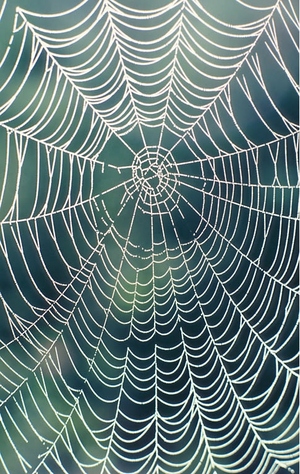For as far back as I can remember, my family on my grandfather’s side always had a dream catcher hanging over every bed in the house. I remember my grandfather showing me one that had been made by my great great grandmother. It was very old by that time and too delicate to be used, but grandpa could not bear to throw it away.
The dream catcher originated in another Native American tribe; that of the Ojibwe. Unfortunately, I know very little abput their people other than that particular fact.
The dream catcher has been a part of Native American culture for hundreds of years. Virtually everyone agrees that it began with the Ojibwe people. But as is true with all myths and legends, stories about how the dream catcher came into being differ slighty from tribe to tribe. There is also some disagreement regarding how the device is meant to work. What does not change, however, is its overall purpose.
Some say that the dream catcher was woven by the Spider Woman herself (see my article on “The Myth of the Spider Woman” for more details) in order to protect her children from night terrors. Others believe that Iktomi, the wisdom spirit, appeared in the form of a spider to explain the life cycle to his believers. He choose a hoop offering that had been made to him to symbolize the circle of life.
As he spoke, he spun a web within the hoop, explaining that there were various pathways in life. Some would lead to good things while others led to bad. And he emphasized the importance of remaining on the “true path.” He said that the dream catcher he wove would catch and hold onto evil spirits to keep them from harming those among the people that were most vulnerable; children and the elderly. Good spirits would pass through the fine web without problem and bless the dream catcher’s owner.
The Lakota people have a similar myth, but theirs indicates that the dream catcher is woven as circle with the center hole for a specific purpose. It is a tool to help believers realize their personal dreams. The dream catcher will filter the dreams of those who believe in the Great Spirit and follow his teachings, ensuring that the good is caught within the web and held there to help its owner achieve his or her goals in life. The bad drops through the hole in the center of the web never to be seen again.
Still other tribes, the Ojibwe included, believe that the idea of the dream catcher was brought forth in answer to a young mother’s prayers. As the story goes, the woman prayed to the Great Spirit because her child was having terrible nightmares and she feared that demons were torturing him in his sleep.
In response, she was given directions for weaving a spider’s web from a willow hoop, nettles, and sacred herbs. From the hoop center, she was to hang feathers in tribute to the good spirit so that he would protect the catcher’s owner from all evil.
The Great Spirit told the young mother that each spin of the web must be done with the purest love possible and that only good thoughts would ensure those feelings were woven permanently into the web. He advised her to leave the center of the web open, like a mother’s heart, to let only love and wishes for happiness to pass through.
When she questioned the purpose for web itself, he told her that the love and goodness with which she wove the web would ensure that it had the strength to capture evil and hold it fast until morning. When the first ray’s of the sun hit the web, the evil would be destroyed by the pureness of light; making it impossible for it to ever return.
Some say that the feathers that typically hang from a dream catcher represent the air that is a necessary part of life. Many tribes use certain types of feathers in the dream catcher. Some are even segregated according to the sex of the dream catcher’s owner.
Oftentimes, owl feathers are used for dream catchers that are meant to protect a female. Owl feathers are considered a woman’s feather. It also represents wisdom, which is a characteristic highly valued among Native Americans.
Eagle feathers are then used for dream catchers that are meant to protect a male. They are considered a man’s father. Eagle feathers stand for bravery and courage; characteristics desired among Native American males.
Many tribes, however, mix the use of feathers from various birds that are significant within their tribe or that have special meaning among their people. Dream catchers woven specifically for adults often contain no feathers at all.
May grandfather believed that dream catchers caught and held all of an individuals hopes and dreams until they were fulfilled. Everything bad, he said, fell through the center hole and was lost for all time. Somehow, those thoughts always brought me peace and tranquility and I will say that I never felt safer anywhere else in the world than I did in my grandparent’s house.
I’m not sure that it matters which specific version of the myth people believe in. It is, after all, the sentiment behind the dream catcher that is important. For that reason, it always makes the perfect gift for a new baby, as a housewarming present, or for a friend or family member that you want to bring good luck and sweet dreams. Better yet, get one for yourself. It is never too late for dreams!



